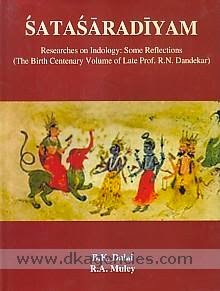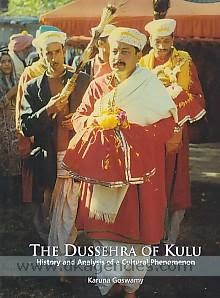The Dussehra of Kulu history and analysis of a cultural phenomenon Karuna Goswamy Shimla : Indian Institute of Advanced Study ; New Delhi : Aryan Books International, 2014.
http://www.dkagencies.com/doc/from/1063/to/1123/bkId/DKB351716276321721728664822054371/details.html
One of the major festivals of India, the Dussehra celebrates the victory of Lord Rama. But, in many ways, the Dussehra of Kulu, (in the state of Himachal Pradesh), is an at once engaging ‘event’ that has few parallels. The festival here was started early in the third quarter of the 17th century, as a ‘State Festival’ by Raja Jagat Singh of Kulu, soon after he became a convert to Vaishnavism. For more than 350 years, the festival -- participated by hundreds of thousands of visitors or ‘pilgrims’ from all over the hills -- has gone on, being held year after year. What is even now remarkable is the manner in which it has kept changing, but without changing its core.
Even if a lot has written on the Kulu’s Dussehra as a cultural event, this book is, perhaps, the first to study the festival as a cultural phenomenon. Tracing the long history of the festival, it tries to understand the complex set of reasons for its being founded as a ‘State Festival’ in the 17th century, the kind of changes that it has undergone over the centuries, and the causes behind its uncommon longevity. In her thoroughgoing analysis, the author shows how the Kulu Dussehra is not just a religious/cultural event, but has always had political and economic dimensions as well. Professor Goswamy demonstrates that the essential form of the festival remains the same, though many rituals, involved in the festival, have changed with the passage of time; and the quantum of homage is no longer what it was before. Generously illustrated, the book represents the author’s research as a Fellow at the prestigious Indian Institute of Advance Study, Shimla
Karuna Goswamy: formerly Professor of History at the Panjab University, Chandigarh, is a distinguished scholar of Indian culture and prolific author.

